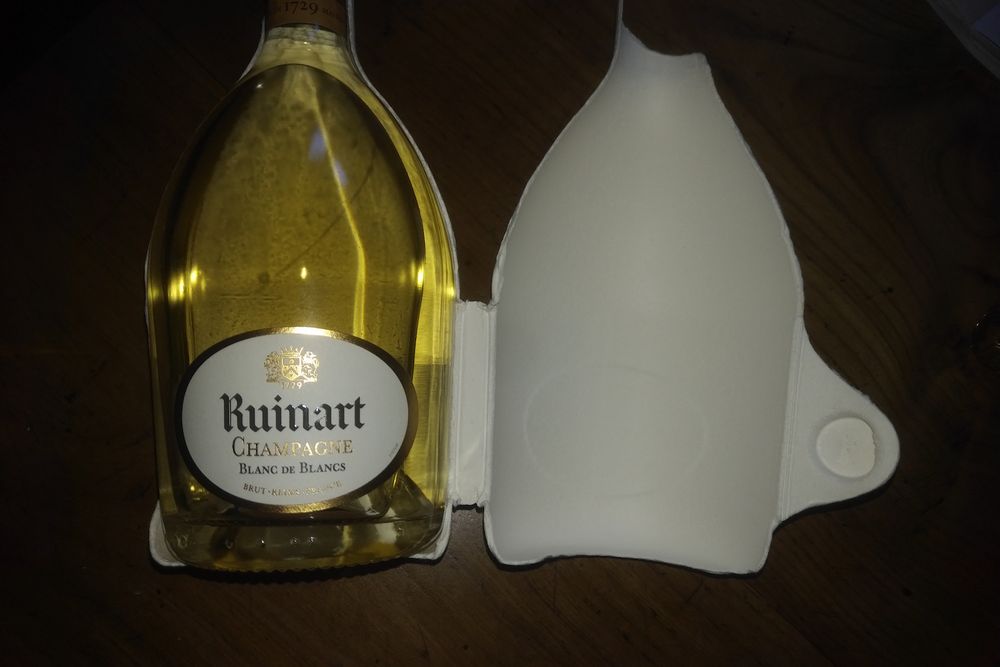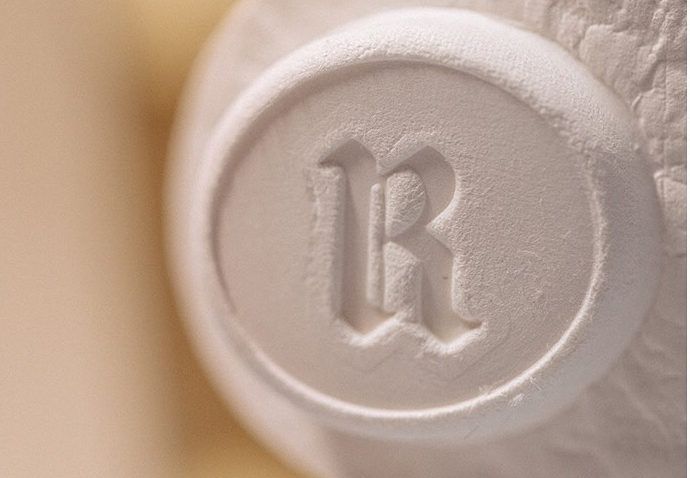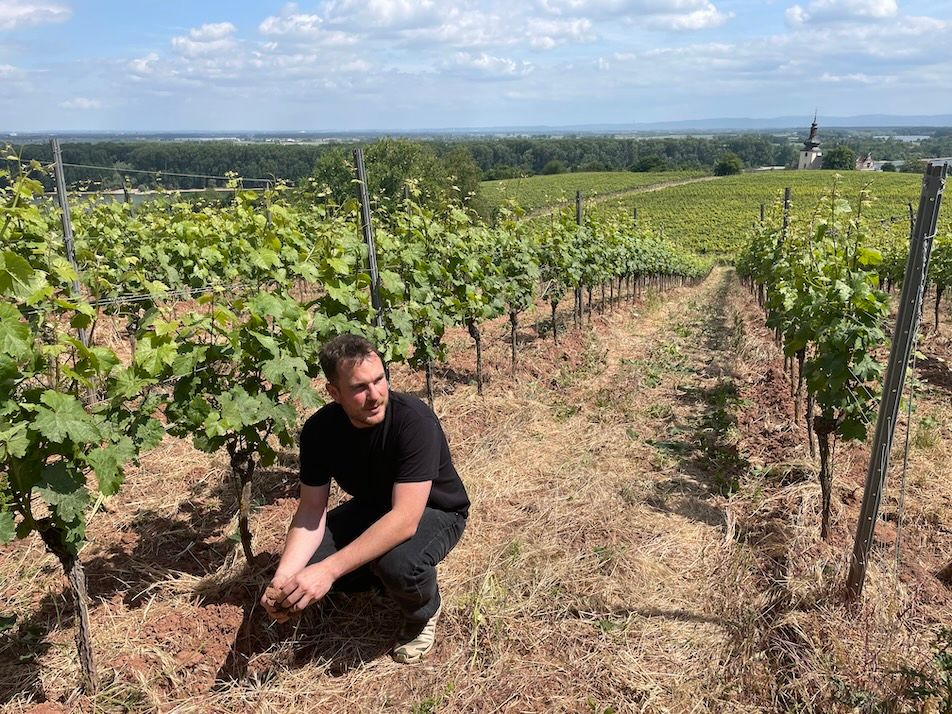Panaïotis outlined Ruinart’s “360-degree” approach to sustainability in the vineyards and winery which have comparatively little impact on carbon emissions compared to packaging and global shipping.
It looks a little like paper maché but feels more solid; its surface is unevenly textured, apparently to recall the surface of the chalk cellars in Reims. It is lightweight and thin while a flap, button-like and embossed with Ruinart’s iconic ‘R’, acts as a fastening.
This new kind of packaging encloses the curvy Ruinart bottle snugly and is perfectly moulded to the iconic, curvy shape – no wonder Frédéric Panaïotis, Ruinart’s chef de cave, refers to it as “second skin”. To me it looks like a protective sleeve and if it also had cooling properties it would indeed be the perfect way to carry your Ruinart bottles to a picnic – but that is too much wishful thinking.

The new case is 100% recyclable paper which is nine times lighter than previous gift boxes
Introduced via a Zoom presentation, Ruinart launched this new packaging to strengthen its environmental and sustainable credentials. It will be on limited release in the UK from September onwards and more widely available as of 2021.
“This new packaging, the second skin you have in your hands,” Panaïotis said, “is a crystallisation of work that we have been implementing for, say 20 years, on how to be a more contemporary and conscious house.”
Noting previous pioneering moves of Ruinart – the first house to make rosé Champagne, for instance, in 1764 – Panaïotis framed this as another pioneering step. The new sleeve will replace the bulky and wasteful giftboxes (used for approximately 20% of Ruinart’s output) as well as the packaging necessary to protect Ruinart’s Blanc de Blancs, sold in clear bottles, from lightstrike. Its credentials are clear: it is nine times lighter than the giftboxes previously used which translates into a 60% reduction of carbon footprint.
Made in the UK’s Lake District from “natural wood fibres sourced from responsibly managed European forests”, this “second skin” is fully recyclable, even compostable. Making the packaging impermeable to light was a particular challenge and required “enriching the cellulose mix with a natural metallic oxide.”
Making it stand up to moisture for long enough, was another tricky challenge. To demonstrate that it actually worked, Panaïotis had his own bottle in a bucket of ice and water. Apparently the “second skin” “maintains its integrity for several hours when stored in a bucket of ice.”

Ruinart’s second skin packaging is apparently inspired by the Maison’s historical Crayères, a UNESCO World Heritage site
Panaïotis said: “It didn’t come easily. It took us two years of research and development, with seven prototypes. There were a few times we thought it would be impossible to make.” But he also emphasises that “there is no patent to the concept because we want other players from the industry” to use it, too.
He said that there already was some interest from the perfume industry, another sector that relies hugely on image and packaging. “We think it’s very disruptive,” Panaïotis said. Apparently the “second skin” is also a lot cheaper to produce – so the costly R&D will pay off eventually.
Before talking about the new packaging, Panaïotis made a compelling case for action: “We, Ruinart, will be entering our fourth century of existence nine years from now. And we need to move fast because we don’t have the luxury of time,” he said, noting the 1.1°C increase in average temperature in the Champagne region since 1961.
He outlined Ruinart’s “360-degree” approach to sustainability in the vineyards and winery – which have comparatively little impact on carbon emissions compared to packaging and global shipping. Having a compostable, 100% recyclable sleeve to replace ostentatious, bulky packaging is a welcome and efficient step. Let us hope it catches on more widely.









































